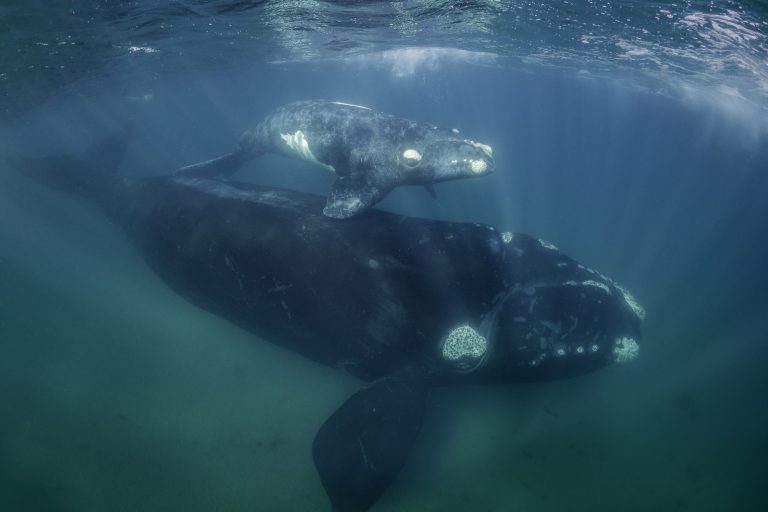Two federal agencies have released a joint strategy for the protection and recovery of the endangered North American right whale. The strategy is in part a response to critics of the federal government’s offshore wind strategy, which many of those opposed to wind farms assert is doing irreparable harm to sea mammals, including right whales.
A post on the National Oceanic and Atmospheric Administration website says the purpose of the strategy is to protect the whales while “responsibly developing offshore wind energy.”
The post says that NOAA Fisheries and the Bureau of Ocean Energy Management have “incorporated the best scientific information and tribal and public feedback” in the plan.
The North American right whale is considered to be on the brink of extinction. The right whale can weigh up to 70 tons and be as long as 55 feet. According to the World Wildlife Federation, there are only about 365 right whales remaining, making them among the most endangered of species.
The joint report outlines mitigation efforts, research and monitoring activities, and communication and outreach actions. Among the immediate mitigation efforts is “avoiding leasing in areas that may impact potential North Atlantic right whale habitat and high-use areas.” It is not clear how this goal will be met, as lease solicitations for areas already demarcated are being accelerated in many areas, including New Jersey.
The strategy calls for the rapid development of advanced technologies that can “detect, monitor and avoid negative interactions between marine mammals and offshore wind construction activities.” The strategy also calls for vessel-strike risk reduction but does not mention the recent studies that found that vessels frequently surpass federal speed limits in the areas that have them.
The strategy will make use of artificial intelligence along with acoustic monitoring to better track the location of whales and monitor the impact of wind farm development.
Much of the report speaks to improving the ability to gauge the effect of wind farm development on sea mammal populations, providing better insight into how such development might negatively impact the right whale and other sea mammal populations. What is less clear in the report is how this will be employed to “avoid negative interactions” between the mammals and ongoing construction activities.
The point that many may still find at issue is that the joint plan does not always make clear how NOAA Fisheries and the Bureau of Ocean Energy Management are going to implement specific actions that will achieve the plan’s goals. The very first page of the document states that “The strategy describes many potential actions for further development but does not define or require specific policies or regulatory actions.”
In many ways it is a plan that seeks to serve two masters. In one sense it speaks of a goal of protecting and furthering the recovery of the right whale while admitting that none of its recommendations are legally binding. In another sense it says it exists “to support the Biden-Harris administration’s goal of developing 30 gigawatts of offshore wind by 2030.”
Protecting the whales and other sea mammals is an issue that as much as any helped to galvanize support along the Jersey Shore for opposition to the state’s offshore wind agenda. Advocacy groups, along with local and county governments, have launched a relentless campaign of protest and litigation that have at a minimum delayed project timetables.
The whale protection strategy is being released as the East Coast is poised to see a ramp-up of offshore wind project construction and accelerated solicitations for more lease areas.
Contact the author, Vince Conti, at vconti@cmcherald.com.








